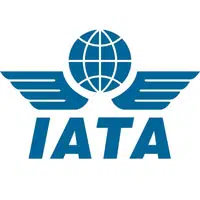The International Air Transport Association (IATA) has teamed up with the GSM Association (GSMA) to identify six core areas of air travel in which passengers, airports and airlines can benefit from the introduction of near field communication technology.

In a white paper produced by IATA and GSMA, ‘The Benefits of Mobile NFC for Air Travel’, NFC has been identified as being able to provide a more efficient and hassle-free process from check-in to boarding.
Outlining their vision of how long queues at airport check-in desks could be reduced, the partners identify the following areas which can be improved:
- Passenger check-in: While existing SMS, MMS and email methods of providing boarding passes are said to have improved the process, NFC gets rid of the physical barcode image which needs to be scanned. With a paperless boarding pass on a mobile phone, passengers do not need to carry around extra items and airports can install extra check-in points which should speed up the process.
- Baggage check-in: Hold baggage is still perceived as one of the major impediments to self-service check-in as passengers still have to queue to drop their bags at a desk. With an NFC check-in process, passengers already checked in will go to a kiosk and easily identify themselves with their NFC mobile phone and get their bag tags printed. Once the tags are stuck to the bags, they will go to a process point dedicated to baggage acceptance only — speeding the process up for passengers and operators alike.
- Security checkpoints: IATA and Airport Council International (ACI) are recommending that airports implement centralised security checkpoints as opposed to gate screening. NFC allows a “seamless solution” to perform checks on passengers without slowing the screening process down, says the report.
- Lounge access: NFC will make the identification of passengers, and their eligibility to enter various lounge areas, far more straightforward for all parties, and will allow airlines to more easily sell added extras — such as VIP lounge access — to passengers before they reach the airport.
- Boarding: This area is key to getting flights away on time. NFC has been identified as a more user-friendly system, allowing passengers to simply swipe their NFC-enabled phones at a checkpoint, identifying them and their flight details. Here, an important advantage of NFC at the departure gate is that the phone does not need to be switched on in order to be used.
- Post-flight: Airlines would be able to sell passengers tickets for travel from the airport they land at on, for example, trains to their final destination. All the passenger would need to do is purchase the ticket before making the trip to their flight and have the ticket ready for them to swipe at the ticket gate once they have gone through customs. As well as being very convenient for the passenger, it allows the airlines and airports to offer a fully integrated travel experience, and could raise extra revenues for them.
Unsurprisingly, the partners come down firmly on the side of a SIM-based approach to delivering NFC services, as opposed to NFC being built into handsets, but are still wary that industry payment standards are not fully set up.
“In the light of these cost implications and challenges, a detailed air transport industry business case needs to be established to validate the economic viability of NFC technology applied to the air transport industry,” the report says.
Readers can download the white paper from IATA’s website.
Next: Visit the NFCW Expo to find new suppliers and solutions